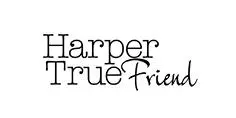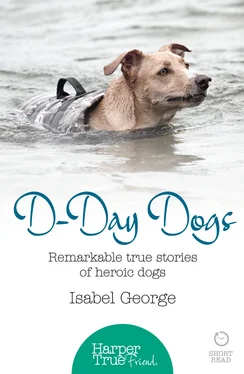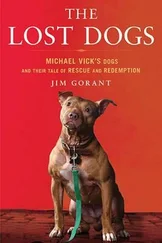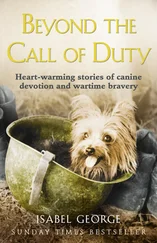Remarkable true stories of heroic dogs
Isabel George

Copyright Contents Cover Title Page Copyright Prologue Ready for anything New job. New home. New wings. April and May 1944 June 1944 5 June 1944, 11.30 p.m. 6 June 1944, Midnight Someone carry the dog Sleeping enemy D-Day plus one Almost over Going home Battle honours We will remember them Also by Isabel George … Also by Isabel George … Also by Isabel George … Also by Isabel George … Also by Isabel George … Moving Memoirs eNewsletter Write for Us About the Publisher
HarperTrueFriend
An imprint of HarperCollins Publishers
1 London Bridge Street,
London SE1 9GF
www.harpercollins.co.uk
First published by HarperTrueFriend 2015
FIRST EDITION
Text © Isabel George 2015
Cover photo © Shutterstock
Cover layout © HarperCollins Publishers Ltd 2015
A catalogue record of this book isavailable from the British Library
Isabel George asserts the moral right to
be identified as the author of this work
All rights reserved under International and Pan-American Copyright Conventions. By payment of the required fees, you have been granted the nonexclusive, non-transferable right to access and read the text of this e-book on screen. No part of this text may be reproduced, transmitted, downloaded, decompiled, reverse engineered, or stored in or introduced into any information storage retrieval system, in any form or by any means, whether electronic or mechanical, now known or hereinafter invented, without the express written permission of HarperCollins e-books.
Find out about HarperCollins and the environment at
www.harpercollins.co.uk/green
Ebook Edition © June 2015 ISBN: 9780007584376
Version 2015-04-23
Digital eFirst: Automatically produced by Atomik ePublisher from Easypress.
Contents
Cover
Title Page D-Day Dogs Remarkable true stories of heroic dogs Isabel George
Copyright
Prologue
Ready for anything
New job. New home. New wings.
April and May 1944
June 1944
5 June 1944, 11.30 p.m.
6 June 1944, Midnight
Someone carry the dog
Sleeping enemy
D-Day plus one
Almost over
Going home
Battle honours
We will remember them
Also by Isabel George …
Also by Isabel George …
Also by Isabel George …
Also by Isabel George …
Also by Isabel George …
Moving Memoirs eNewsletter
Write for Us
About the Publisher
D-Day was the largest amphibious operation in history. On 6 June 1944 a mighty Allied force descended on occupied France and in a matter of hours determined the freedom of the Western world. Operation Overlord was the most decisive invasion of the Second World War, involving over 150,000 British, Canadian and US troops. Under cover of darkness they reached the Normandy coast, some by air and others by sea, among them a fearless band of canines trained to do their duty for King and country. The D-Day dogs accompanied the men into battle and helped assure freedom and peace.
‘Do you realise that by the time you wake in the morning 20,000 men may have been killed?’ British Prime Minister Winston Churchill is said to have shared the anxiety of this moment with his wife, Clementine, on the eve of D-Day. Moments after midnight on 6 June 1944 the Allied assault upon Hitler’s ‘Fortress Europe’ had begun.
The operation was the culmination of two years’ meticulous planning and training, and had to succeed where the landing at Dieppe in August 1942 had so disastrously failed. There could be no repeat of the errors that turned the heavily defended shore of Dieppe into a killing field strewn with the bodies of thousands of British and Canadian troops. Many fell to the barrage of German gunfire before they even made it out of the convoy of landing craft as they raced towards the beach. Determined the enemy would never be given a chance like that again, the Allied leaders approached the D-Day plans with single-minded focus and rigid attention to logistical detail.
As the preparations for D-Day got underway, the War Office’s request for civilian canine recruits to join up proved well timed. Dogs were already being used to aid the war effort, distinguishing themselves in battle alongside troops overseas and in the role of guard and protector on bases at home.
Brian, a lively Alsatian pup, was just two years old when Betty Fetch from Leicester, England, donated him to the war effort. It had not been an easy decision, but somehow Betty knew she had to find it in her heart to let Brian join the Army. He would not only be playing his part in bringing the conflict to an end; he would also be helping Betty – finding food to feed the family was a challenge, and there were often few scraps left for the dog. The Army promised its war dogs at least one good meal a day, so that made Betty’s decision easier. She loved Brian and, given the dire circumstances of war, the Services seemed the best option for him. And besides, he would only be on loan. All the dogs had been promised safe passage home when it was all over. So with a heavy heart, Betty let Brian go to war.
Betty knelt down and put her arms around her dog’s neck. He snuggled up close to her as she whispered her goodbyes. She told him that he would be away for a while, but he would be fed and looked after by the soldiers. She told him that he would be coming back home as soon as the war was over, but for now his country needed him more than his family did, and so he must go and be very brave.
Brian left home to serve King and country, and as Betty dried her tears she could never have guessed that her beloved pet was destined to become a D-Day hero.
‘What do you think about this fella? He enlisted with the name Brian, but he looks more like a Bing to me.’ Lance Corporal Ken Bailey was a dog lover, and his time with the Royal Army Veterinary Corps had convinced him that military working dogs were more than just fireside companions; they were capable of unstinting devotion to duty and exceptional courage. ‘Well, if you lot agree, we have a new recruit and we’re going to call him Bing.’ Ken looked directly into Bing’s big brown eyes as he said the name. ‘Bing! That’s a name to be proud of, lad, as you start your new life today.’
The War Dog Training School in Potters Bar was a legacy of the First World War, thanks to the persistence of a certain Colonel Ernest Richardson. After a long battle with the War Office this dog lover and career soldier eventually persuaded them to consider the vital role that military-trained dogs could play in the conflict, both on the home front and on the Western front. Richardson’s stubborn refusal to take no for an answer finally paid off and in 1916 he was given the go-ahead to set up the training school. Consequently, the British Army followed the example of the French, Belgians and Germans in adopting canine power to assist the military – dogs could be seen guarding ammunition depots, patrolling with the troops and running messages in the trenches.
Despite the success of the dog army in the Great War, it was again down to Colonel Richardson in 1939 to remind the Government that dogs could be serious weapons in the Second World War too. He was given permission to reopen the War Dog Training School and the public were asked to donate their pets for service. By April 1944 the school was just one of many military bases in the South of England preparing for D-Day. Plans for the invasion had been confirmed two months earlier, and the dogs were now very much part of a massive military deployment.
Читать дальше













